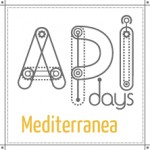At the conclusion of the first API Days San Francisco, one thing is clear above all else: APIs are in. Huge growth in the startup space developing APIs and major acquisitions amongst the larger companies are a great indicator of a burgeoning API ecosystem. Despite a wide variety of opinions and philosophies in the speaking arrangement capable of satisfying any developers thirst for insight, one common theme prevailed: APIs are a critical component of any modern development strategy.

API Economy Panel – Image by Michael Pratt
Rather than providing a simple recap, let’s touch on a few of the most important and emerging topics discussed.
Who are you developing for?
When you’re developing an API, it’s important not to lose sight of exactly who you’re developing for. Bryan Helmig and Amber Feng remind us that most likely, it’s not an end user. Whether you have a public API, an API for other teams in your organization, or simply an API for your own front end, an end user won’t likely be directly interacting with your API. Instead, your user is another developer.
To this extent a vibrant discussion occurred during the API Design panel with Jakub Nesetril, Kevin Nelson, and Tony Tam. When developing an API, a whole spectrum exists between making the API itself easy to use, and making it easy to use the API. On one end, the API transport layer itself is simple and easy to understand and SDKs may be created by the community; on the other, the API is rarely touched directly and instead easy-to-use SDKs are provided to users. Depending on the developer experience you’re reaching for your business may be better served by one or the other – or somewhere in between.
APIs as a Product
Stephen Willmott had an interesting presentation titled “As Software eats the world, APIs are eating software.” Across the world, problems of every shape and size are increasingly receiving software based solutions. With the increasing prevalence of service-oriented architectures, Daniel Jacobson additionally explains how APIs are taking over more and more of the actual processing capabilities. In the future we’ll be seeing a shift away from single monolithic software applications and towards multiple independent micro-applications – all of which interoperate via APIs.
Now that business is adopting APIs in record numbers, the economy of course expects them to have value. Guillaume Charny-Brunet and many others described that in order to develop a valuable API strategy, you have to consider APIs as a product rather than just something that powers products. An open API can allow users to remix your product(s) in a way that your research and development team hasn’t gotten around to, or perhaps never even thought was useful. By engaging interested outside developers, you can get valuable insight into how your products may be used next.
Icebergs. Lots of Icebergs.
If there were one iconic image from this conference, it would be the iceberg. Presented no less than three times in various presentations, it of course represents how much of the API world is still hidden beyond the immediate surface. The Open/Closed API Divide hides many APIs that may be useful, and the Internet of Things shows how many devices are connected but may be waiting for a clever application to use them.
Mike Amundsen and others describe the incredible proliferation of internet connected devices over the past five years. Mobile is of course leading the charge, but everything from televisions to thermostats to refrigerators are entering the fray as well. These devices are not always traditionally considered when thinking about API use, but as we connect them together more and more, the APIs they use to communicate will become increasingly interesting.
On top of how many unknown devices there are, we also have an incredible number of unknown APIs. Blake Dournaee describes how an API comes about and raises some interesting questions, many covered in other presentations. Adam DuVander describes what it means for an API to be open – it must at least be acknowledged or documented. A closed API is hidden; outside developers may not know of it’s existence; or if they do, the API may not be supported or even supposed to be used by a third party at all. These closed APIs hide the true size of the current API ecosystem. If there’s any key takeaway from this, it is likely that an open API increases value for everyone.
There are a number of excellent speakers not mentioned here of course; for brevity this article is limited to those topics related to API User/Developer Experience. Check out the conference page for information on other speakers and topics. Previous API Days occurred in Paris and Madrid, with another planned in Paris. Interestingly, the API Days conference is taking an open-source model in which they are advocating others to seed new API Days in cities across the world. Read more about their idea and learn how you can bring it to your city on their blog.



Pingback: APIdays Mediterranea